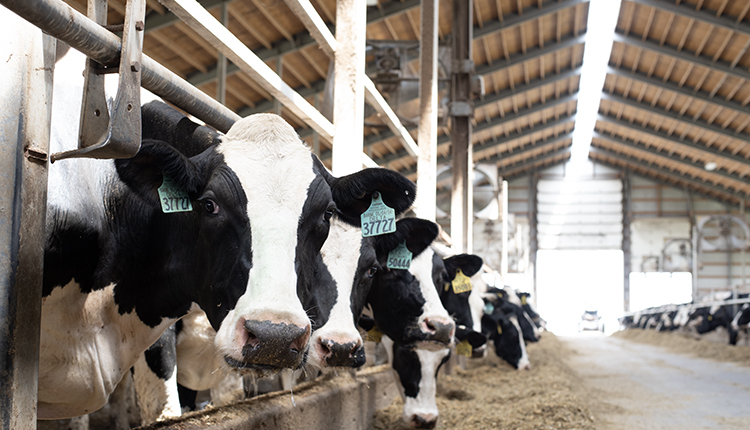
When it comes to cow health, the transition from the dry period into early lactation is the time period that can bring forth the most complications.
“Early lactation health problems translate into long-term problems for cows,” explained Trevor DeVries. “Those health challenges in early lactation are related to intake and behavior during the transition period,” continued the University of Guelph professor and Canada Research Chair.
As DeVries made those statements, he shared this research data to double-down on his points:
- Cows that had no clinical disease during early lactation produced 23,000 pounds of milk, 89% were enrolled for breeding during that lactation, and only 23% were culled.
- Cows that had one clinical disease event in the first three weeks postcalving produced 22,250 pounds of milk, 60% were enrolled in the breeding program, and 36% were culled in that lactation.
- Cows that had multiple disease events in the first three weeks postcalving produced 21,500 pounds of milk, only 35% were enrolled in the breeding program, and 54% were culled in that lactation.
Many of these problems that ultimately lead to early culling are feeding-related and metabolic in nature. “A greater drop in intake prior to calving leads to greater energy deficits and to a less stable rumen environment postcalving,” continued DeVries. He also pointed out that disease incidence in early lactation is not only associated with fat mobilization and inflammation, but also markers of stress.
“Changing diets, regrouping and movement, overcrowding, and heat stress are some of the common stressors transition cows face. The first two on the list are inevitable, and the other two are more preventable but still do occur,” he continued when speaking to those attending the 16th Western Dairy Management Conference in Reno, Nev.
As for options to improve intakes and reduce the stress of a dietary change at calving, he rhetorically asked the audience, “Can we make our dry cow diets more similar to milk-cow diets in terms of density and fiber length?
“The short answer is, ‘Yes,’” he said in answering his own question. “Rumen health is improved postpartum when we achieve this diet match. You also may use feed additives to improve energy metabolism and help cows cope with stress. Feed additives also may help stabilize the rumen and improve eating behavior, too,” continued DeVries.
Minimize the movement stress
“Every time we move a cow, we create stress,” shared DeVries. “When cows face stress, among other effects, rumination time drops, and that has further consequences. Ask yourself, ‘How can we minimize those pen movements? Can we move cows at quieter times of the day?’
“Milking time and feeding time may not be the best choices,” he said, and he advised looking for quieter times of the day. “The impact of pen moves is far more dramatic for first lactation cows.”
Then there’s overcrowding.
“The minute we overcrowd transition cows, we also see an immediate impact. These cows must be able to eat and lay down when they want to. Also, we need to minimize the time without feed,” he said. “If you do face overcrowding, provide comfortable environments by optimizing stall design and bedding,” he further advised.
To that end, an audience member asked DeVries for his definition of overcrowding. “It takes place anytime a cow cannot access a stall or feeding space. For lactating cows, that involves one cow per stall and 24 inches of feeding space per cow,” explained DeVries. For transition cows, we should be targeting 30 inches of feeding space per cow and 80% of stalls filled.
“Heat stress also can confound the situation, even more so when overcrowding is a concern,” DeVries went on to say. “Provide cooling, particularly for dry cows. Also, manage diets to encourage consistent eating patterns. This can involve delivering high-quality forages and frequent feed deliveries.”
Then there’s the ingredient of all ingredients — water. “Water is so important, also for dry cows,” he added. “Dry cow pens need at least 4 inches or more of water space per cow, and once you have multiple cows in a pen, you must have at least two waterers.”








